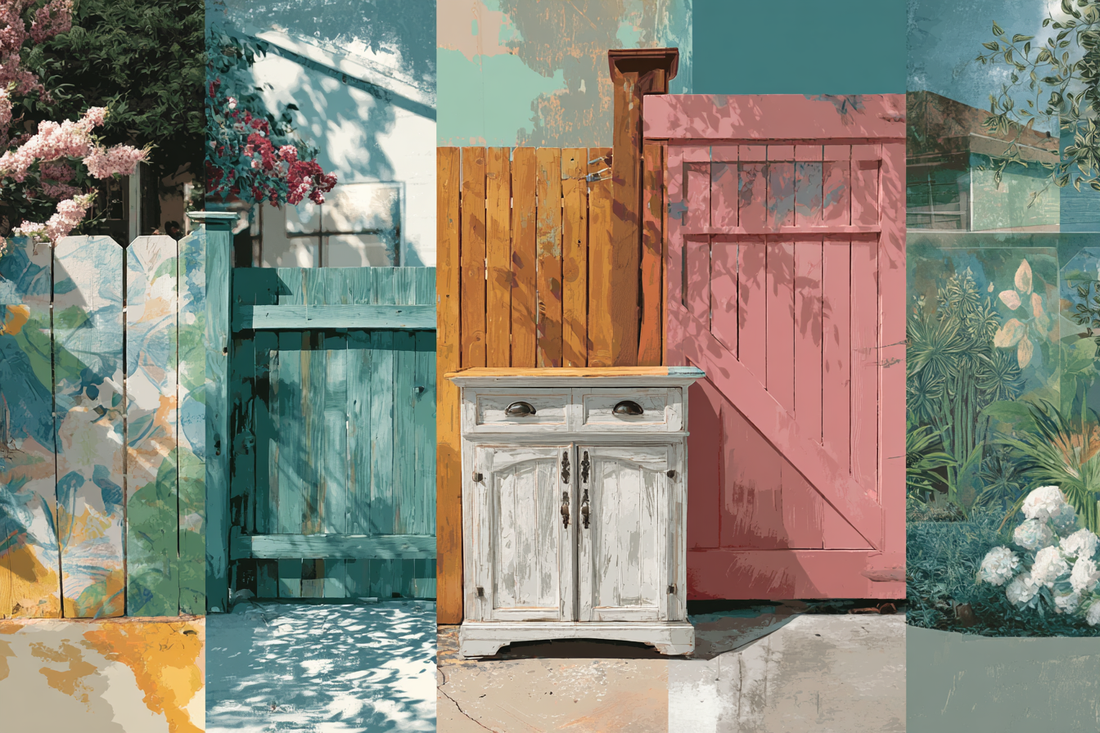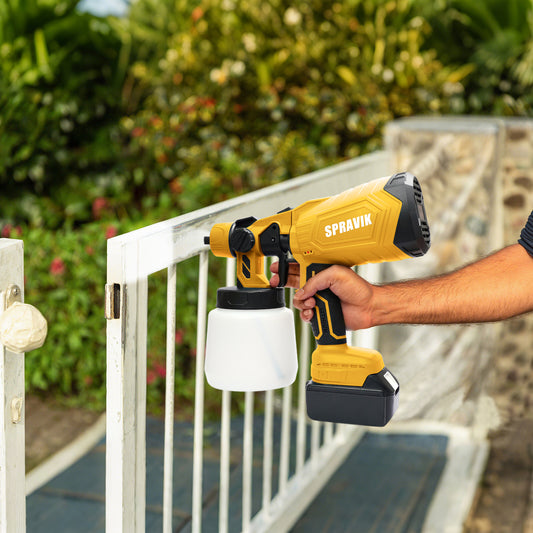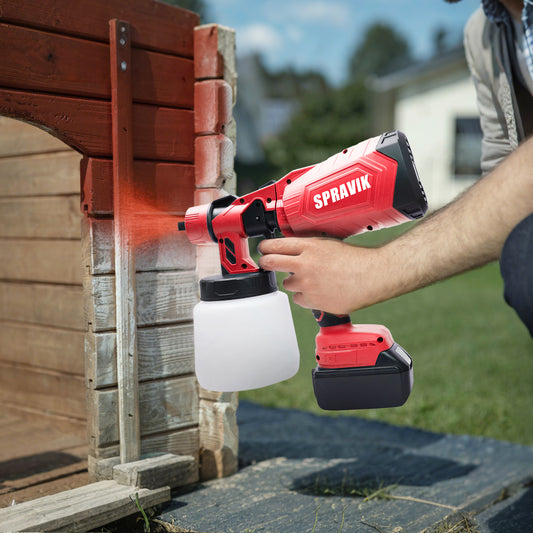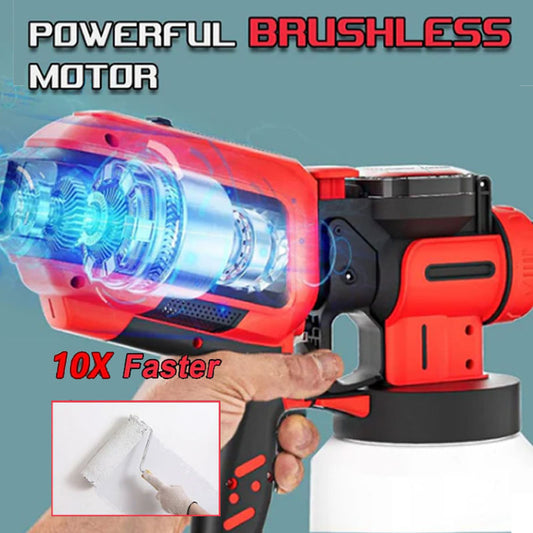
Top 10 DIY Projects Made Easy with a Paint Sprayer
Spravik AdminPaint sprayers have revolutionized the DIY world, offering a faster, smoother, and more professional-looking finish compared to traditional brushes or rollers. Whether you’re a weekend warrior or a passionate renovator, a paint sprayer can take your projects to the next level. From restoring furniture to revamping your car, the versatility of modern sprayers is unmatched. In this guide, we’ll walk through ten rewarding DIY projects where a sprayer truly shines—and explain how to use tools like spray paint for cars or spray paint for wood to get the best results.
One of the most popular uses for a paint sprayer is furniture refinishing. Old wooden chairs, tables, or dressers can be instantly modernized with a fresh coat of spray paint for wood. Sprayers help you reach into nooks and crannies, producing a smooth, brush-free finish. Start by sanding the surface, applying primer if necessary, and using a light-colored spray paint for wood to bring new life to tired pieces.
Next is cabinetry—a high-impact DIY project often tackled in kitchens and bathrooms. Paint sprayers deliver a factory-like finish on cabinet doors and drawer fronts. Rather than dealing with brush marks, a sprayer applies even coats, ideal for flat and raised panel surfaces. Spray paint for wood is essential here, especially in high-traffic areas where durability matters. Always remove hardware and mask surrounding areas for a clean job.

DIYers also love sprayers for accent walls and murals. A bold color applied to a single wall can completely change a room’s vibe. Paint sprayers allow you to apply paint quickly and uniformly, reducing drips and streaks. If you're working with stencils or gradients, a sprayer provides greater control than a roller or brush.
Another standout use is deck and fence restoration. Outdoor wood structures often require regular maintenance to prevent weather damage. Sprayers make the job easier, especially when working with slats, railings, and uneven surfaces. Use spray paint for wood that’s weather-resistant and UV-protected to extend the life of your deck or fence.
Refinishing doors is another excellent application. Interior and exterior doors—whether paneled, flush, or French—can be updated in under an hour with a sprayer. Use spray paint for wood that matches your décor or makes a bold statement. A sprayer helps avoid brush streaks and ensures even coverage across textured panels.
Shutters and trim often get overlooked, but fresh paint can make them pop. These narrow, detailed elements benefit greatly from a paint sprayer’s precision. Using spray paint for wood, you can quickly update trim around windows, baseboards, and crown molding without the tedious work of taping and brushing.

Let’s not forget the garage floor or outdoor concrete surfaces. While not wood, many paint sprayers can handle thick coatings or sealants used on cement. This is especially useful if you want to paint garage floors with a protective epoxy finish. Some brands also produce spray paint for cars that can be adapted to floor painting when using appropriate nozzles.
Speaking of vehicles, spray paint for cars is a game-changer for automotive DIYers. Whether you're repairing a scratch, repainting a panel, or customizing an entire vehicle, a paint sprayer ensures even layers and high-gloss finishes. Use automotive-grade spray paint for cars that resists UV damage and weathering. Be sure to practice on scrap material and follow safety protocols, including using a ventilated workspace and wearing protective gear.
Another creative project is crafting custom signs or wall art. Spray paint for wood allows you to personalize plaques, boards, or reclaimed wood pieces with stenciled letters or freehand designs. A sprayer delivers crisp lines and helps blend colors for unique gradient effects. These are great for gifts or home décor.
Finally, outdoor furniture is a perfect candidate for spray painting. Metal or wood chairs, benches, tables, and even planters can be rejuvenated in an afternoon. Use spray paint for wood with a built-in primer or topcoat to streamline the process. A paint sprayer cuts project time drastically while enhancing visual appeal and weather resistance.
Using a paint sprayer effectively involves more than just pulling a trigger. Here are some universal tips for making the most of your DIY project:
Always clean and prepare the surface thoroughly. Dirt, grease, and old flaking paint can prevent adhesion.
Choose the right spray tip or nozzle for your material. Thicker paints may need a larger tip.
Use thin, even coats. Multiple light coats are better than one heavy pass.
Keep a consistent distance (usually 10–12 inches) from the surface.
Move the sprayer in overlapping strokes for complete coverage.
Practice on scrap material first to test spray patterns and pressure.
Ventilate your work area and use safety gear, especially when using spray paint for cars or solvent-based products.
Both spray paint for wood and spray paint for cars come in a wide variety of finishes, including matte, satin, gloss, and metallic. Your choice will depend on your project type and the aesthetic you’re going for. For example, matte black spray paint for wood is trendy for modern furniture, while glossy red spray paint for cars is iconic and vibrant.

Maintenance of your sprayer is essential for consistent performance. Clean the system after every use, especially when using heavier materials like automotive paint. Even if you’re using water-based spray paint for wood, leftover residue can clog the nozzle or reduce spray quality. Disassemble the parts if necessary, soak in a cleaning solution, and store properly.
If you're budget-conscious, you don’t need to invest in the most expensive sprayer. There are affordable options that work exceptionally well with both spray paint for cars and spray paint for wood. The key is to match the sprayer type to your project—HVLP (High Volume Low Pressure) sprayers are great for detailed furniture work, while airless sprayers excel at covering large surfaces quickly.
As paint sprayer technology continues to improve, more DIYers are discovering the benefits of owning one. They’re no longer reserved for contractors or professional painters. Today, a homeowner with basic knowledge and the right tools can tackle projects that once required expensive labor.
In summary, a paint sprayer opens the door to countless DIY opportunities—from restoring furniture and painting walls to reviving fences and detailing cars. With the right approach and quality spray paint for wood or spray paint for cars, even a beginner can achieve a finish that looks professionally done. So grab your sprayer, pick your project, and let your creativity flow.










